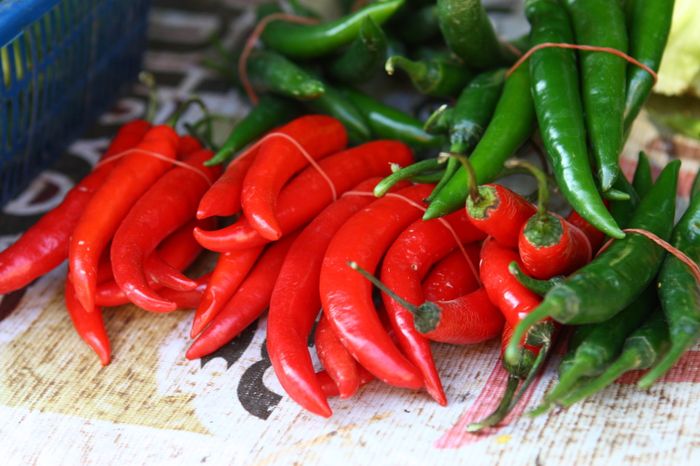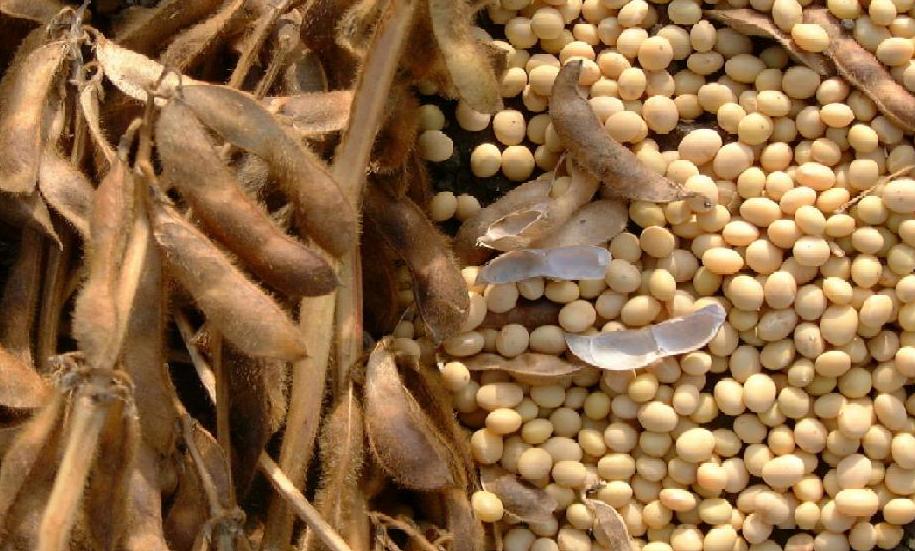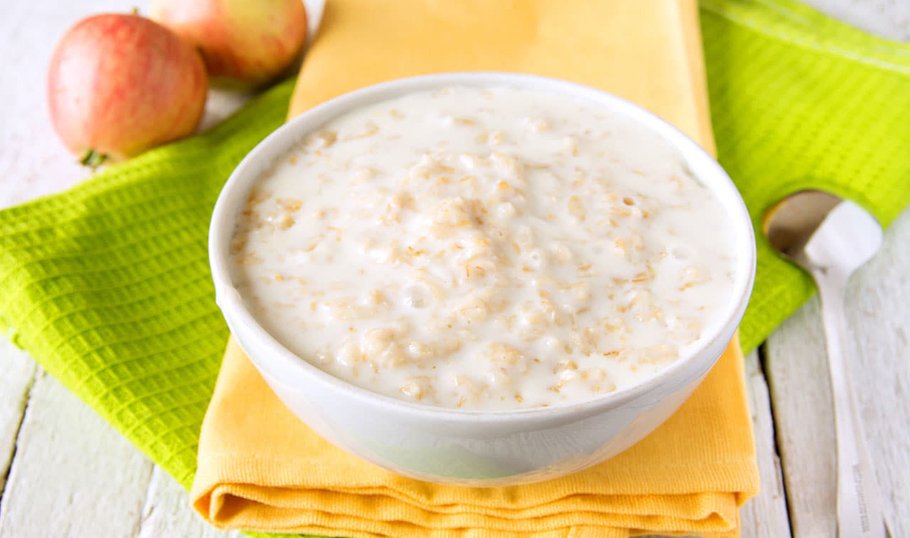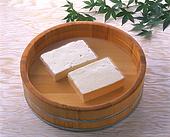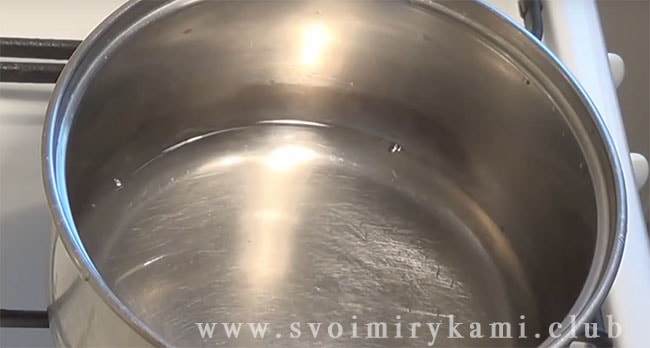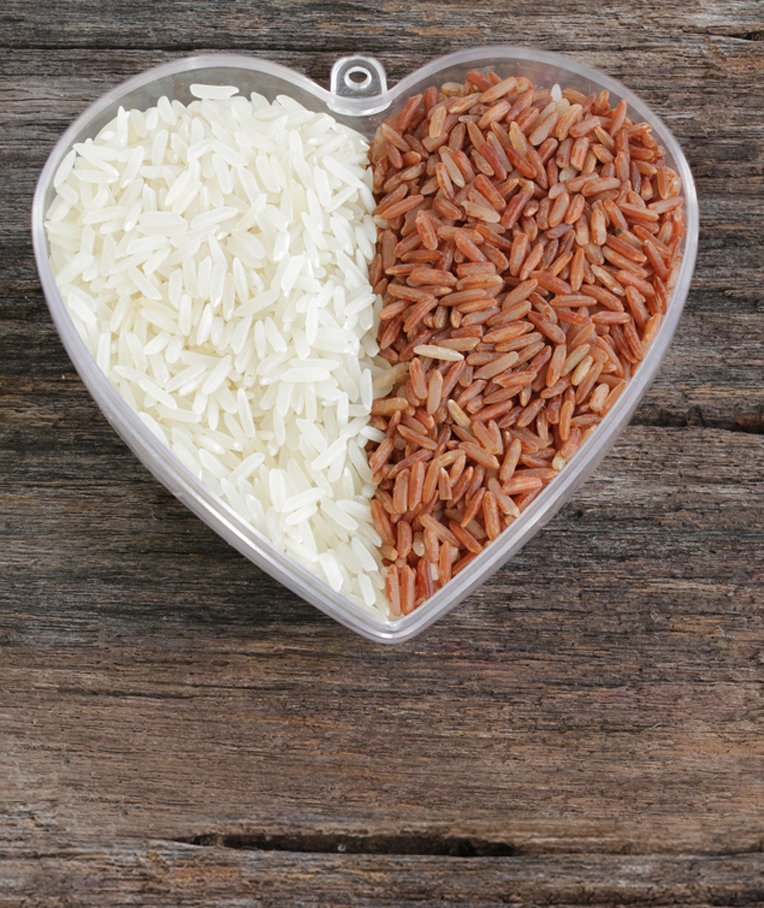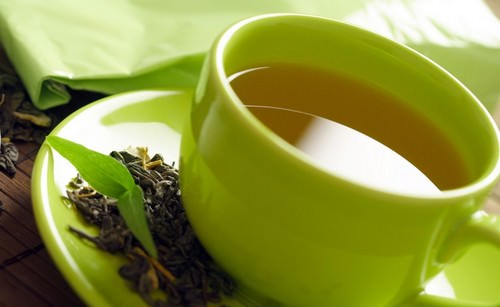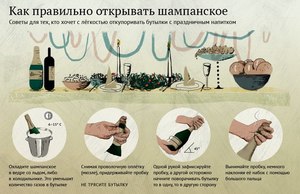What is soybean: composition, benefits and harm to the human body. Soya benefits and harm to women's health
In recent years, soy has become the flagship of a healthy diet. But what, in fact, is its use? And is soy good for everyone?
Soy is declared a miracle product. Soya mince, milk, tofu and even chocolate soy nuts have become a symbol of a healthy lifestyle, along with wheat germ oil, broccoli and a fitness club membership. Recall an example of the inhabitants of the country of the Rising Sun. As you know, they try soy products, almost never before mother's milk, but their enviable health and longest life expectancy have already become a byword. It is no wonder that there is a desire to follow their example, become an adherent of soy and no longer worry about your health.
Meanwhile, in the scientific world there is no agreement about soy. Some scientists attribute to soy products magical properties to prevent breast cancer, lower cholesterol, resist senile dementia, cope with the “scourge of menopause”, hot flashes, and strengthen bone ... Other representatives of the world of science claim that the role of soy in the fight against these troubles is minimal, and some generally believe that soy, with its many side effects, does more harm than good.
Breast cancer
According to statistics, this terrible disease threatens every eighth woman. If you already have a sad diagnosis of breast cancer in your family, you are even more at risk. Scientists are constantly working on finding drugs that can prevent a tragedy, and soy has become one of the candidates for this role. The first argument brought by her supporters is: "Japanese women, who traditionally include soy, are much less likely to suffer from breast cancer than women in Europe and Americans." Does this mean that soy helps prevent this disease? A moot point.
To replace estrogen Let's delve into the theory. By contacting breast cell recipes, estrogens stimulate their division. If there is already a tumor in the initial stage, estrogens, of course, spur its growth. Thus, estrogens become an activator of cancer. That is why the effect of some anti-cancer drugs is aimed at suppressing the activity of estrogen circulating in the female body. Soy contains substances called isoflavones, surprisingly similar to estrogens in their structure. For this reason, they are also able to “occupy” cellular receptors. As a result, estrogen molecules cannot join them. It turns out that isoflavones play the same role as medications prescribed by doctors, but do not have their side effects.
Isoflavones, plant compounds that make up soybeans, are similar in their biochemical structure to female sex hormones estrogens and have a similar effect. However, isoflavones act selectively, exhibiting both estrogenic and anti-estrogenic activity, depending on the amount of estrogen in your blood.
Cycle link Soy isoflavones have an amazing ability to lengthen the menstrual cycle, and this is very useful for the prevention of breast cancer. The fact is that each cycle is accompanied by hormonal “storms”. They are accompanied by the injection of a large amount of estrogen into the bloodstream, which, as you already know, can provoke the growth of tumors. If the menstrual cycle lengthens, then hormonal "storms" have to be experienced less often. And this means reducing the risk of breast cancer.
In women who take 40 mg of soy isoflavones daily, the cycle lengthens by almost 4 days. It would seem that not so much. However, you can figure out how much a win in a decade will turn out! According to statistics, the menstrual cycle of a European woman averages 21-28 days, that is, 12-14 cycles fit into a calendar year. But in Asian women, the cycle duration is 28-32 days, so that less cycles are gained during their life. In addition, their first menstruation comes later, but menopause comes earlier. And this again means that Asian women have fewer cycles than European women. If we compare all these data with high statistics of breast cancer in Europe and low in Asia, we get an “iron” argument in favor of soy. By lengthening your menstrual cycle, it actually helps prevent cancer.
What if? Yes, Asian women, for whom soy is a staple food, have little cancer with breast cancer and other cancers. However, one can argue that, they say, soy has nothing to do with it. Perhaps the Asians have some genetic characteristics that protect them from tumors? But here is the data of American medicine. When doctors began to examine the numerous communities of emigrants from Asia who changed their gastronomic preferences in a new place of residence, it turned out that the statistics of cancer with Asian women was not much different from the statistics of Native American women.
Have time to choose a profession And a little more theory. It turns out that the human body regularly produces the so-called stem cells. Together with blood, they “travel” through the body and can, depending on the needs of the body, become cells of the mammary gland, blood, skin, intestinal mucosa, etc. Unfortunately, stem cells that have not yet decided on the choice of "profession" are able to degenerate into a cancerous type.
So, soy contributes to the choice of the "profession" of stem cells, so many researchers consider it a cure for cancer. Unfortunately, a fat minus is hidden in the beneficial effects of soy. Isoflavones have a depressing effect on the endocrine system of children. A child who has been accustomed to soy from an early age is much more likely to have thyroid disease than his peers grown in traditional milk.
The Japanese are against! It is curious that Japanese scientists themselves do not share the optimism of their European colleagues about soy. They attribute the favorable statistics of breast cancer diseases in Japanese women exclusively to healthy national nutrition. Japanese women traditionally eat little, moreover, the basis of secret "female" cuisine has been rice cooked on water for many centuries. Meanwhile, European researchers have indeed shown a strong link between overeating and an increased risk of breast cancer. Moreover, the International Health Organization has already included an item on combating overweight in the list of recommendations for the prevention of breast cancer.
Soya against the tides
|
Cholesterol
The only positive property of soy, in which scientists are one hundred percent sure, is its ability to lower the level of "bad" cholesterol. True, to achieve the desired effect, you will have to get up to 25 g of soy protein per day. So much of it is found in 250 g of tofu cheese. It is clear that such an amount of tofu can not be defeated in any way. Moreover, daily. How to be? Buy soy protein in powder. One scoop of the drug can be dissolved in water, juice or low-fat milk. And you can add in the morning oatmeal.
Osteoporosis
Scientists have found that soy can effectively combat osteoporosis in women during menopause. Firstly, because soy contains estrogen-like isoflavones, and it is precisely because of a lack of estrogen that osteoporosis occurs in women during menopause. And secondly, soy protein contains a lot of calcium, which is necessary for bones to be strong and healthy.
It is not that simple
Soy should be very cautious for those who have endocrinological diseases: practice shows that daily consumption of 40 mg of isoflavones slows down the production of thyroid hormones. This will be enough to feel weak, unlocalized pain and suffer from constipation.
Scientists do not exclude that the passion for soy products can harm people suffering from urolithiasis. The explanation is simple: in soybean there are oxalate salts of oxalate, which serve as the starting material for the formation of kidney stones. Due to the high content of hormone-like compounds, soy is contraindicated in pregnant women.
Soy is different
 What is the best way to consume soy? What to stop on - whether soya mince, milk, cheese, or maybe take nutritional supplements with soy isoflavones? Experts unanimously vote against food additives. To take isoflavones in a “pure” form, you must be one hundred percent sure that you have no tumor processes. Medical diagnostics in this sense are still lame. So it’s better not to risk it. In addition, with nutritional supplements you will not be able to get valuable soluble fiber, which is rich in natural soy products and which prevents the development of colon cancer.
What is the best way to consume soy? What to stop on - whether soya mince, milk, cheese, or maybe take nutritional supplements with soy isoflavones? Experts unanimously vote against food additives. To take isoflavones in a “pure” form, you must be one hundred percent sure that you have no tumor processes. Medical diagnostics in this sense are still lame. So it’s better not to risk it. In addition, with nutritional supplements you will not be able to get valuable soluble fiber, which is rich in natural soy products and which prevents the development of colon cancer.
It is no secret that soy has a specific taste, which is not so easy to get used to. It is unlikely that you will be able to overpower a whole glass of soy milk without preparation! Therefore, at first try to add a little bit of soybeans to your favorite dishes. For example, put tofu in a salad or pasta instead of cheese. With soya mince, you can cook spaghetti bolognese or rice casserole.
Nutritionists advise replacing soybean with frankly harmful products. For example, crunch soy nuts instead of chips or put a soy cutlet on a plate instead of a fatty piece of pork (saving up to 30 grams of fat, but this is serious!). However, do not try to squeeze out all the other protein from your diet with soy! There are many other useful sources of vegetable protein in the world. Remember, there is no harmful protein. Harmful is the way to cook this or that protein dish ...
Cultivated soybeans belong to the legume family. Today it is well known and distributed throughout the world. Due to its unique chemical composition and high yield, soy is used in the production of many food products.
Table of contents:The history of soybeans began in the third millennium BC, it follows that this culture is one of the oldest on the planet. China can be considered the homeland of soybeans, since it was in this country during archaeological excavations that rock paintings with its image were discovered, and the first written references also relate to China.
The next country that cultivated soy is Korea. Then, around 500 BC, they began to eat it on the Japanese islands. Europe, this culture became known in the XVIII century, France became the country "discoverer". The United States of America cultivated soybeans only later - at the beginning of the XIX century, it was then that a lot of plant samples were brought into the country, with which the best breeding institutions worked. A little later, the Americans began to grow soybeans on an industrial scale, and by the middle of the 20th century, about a million hectares of land were sown to it.
 The first soybean crops were made on Russian lands in 1877, and breeding work began already in 1912, for which an experimental field was provided at the mouth of the Amur River. According to experts, the years 1924-1927 became "landmark" in the cultivation of soybeans in Russia. It was at that time that the fields of the Krasnodar and Stavropol Territories, as well as the Rostov Region, began to sow en masse.
The first soybean crops were made on Russian lands in 1877, and breeding work began already in 1912, for which an experimental field was provided at the mouth of the Amur River. According to experts, the years 1924-1927 became "landmark" in the cultivation of soybeans in Russia. It was at that time that the fields of the Krasnodar and Stavropol Territories, as well as the Rostov Region, began to sow en masse.
Interesting! The Russian name "soya" is borrowed from the Romance languages \u200b\u200b(soja), and the European forms of this word lead to the Japanese "sho: yu", which means soy sauce.
The biochemical composition of soy
Nutrition value of 100 g:
- Calories: 364 kcal
- Protein: 34.9 gr
- Fat: 17.3 gr
- Carbohydrates: 17.3 gr
- Dietary fiber: 13.5 g
- Water: 12 gr
- Mono- and disaccharides: 5.7 g
- Starch: 11.6 g
- Ash: 5 gr
- Saturated Fatty Acids: 2.5g
- Unsaturated fatty acids: 14.35 g
Macronutrients:
- Calcium: 348 mg
- Magnesium: 226 mg
- Sodium: 6 mg
- Potassium: 1607 mg
- Phosphorus: 603 mg
- Chlorine: 64 mg
- Sulfur: 244 mg
Vitamins:
- Vitamin PP: 2.2 mg
- Beta Carotene: 0.07 mg
- Vitamin A (RE): 12 mcg
- Vitamin B1 (Thiamine): 0.94 mg
- Vitamin B2 (Riboflavin): 0.22 mg
- Vitamin B5 (pantothenic): 1.75 mg
- Vitamin B6 (Pyridoxine): 0.85 mg
- Vitamin B9 (Folic): 200 mcg
- Vitamin E (TE): 1.9 mg
- Vitamin H (Biotin): 60 mcg
- Vitamin PP (Niacin Equivalent): 9.7 mg
- Choline: 270 mg
Trace elements:
- Iron: 9.7 mg
- Zinc: 2.01 mg
- Iodine: 8.2 mcg
- Copper: 500 mcg
- Manganese: 2.8 mg
- Chromium: 16 mcg
- Fluoride: 120 mcg
- Molybdenum: 99 mcg
- Boron: 750 mcg
- Silicon: 177 mg
- Cobalt: 31.2 mcg
- Aluminum: 700 mcg
- Nickel: 304 mcg
- Strontium: 67 mcg
Proteins and Fats
The main component of this product is protein. By the way, soy is one of the highest protein crops, which is why it is the main meat product and is well absorbed.
Soy fat elements also have a beneficial effect on the body, plant grains contain:
- palmitic acid
- linoleic and linolenic acids,
- oleic acid.
The benefits of the above acids have long been proven. So, for example, linolenic acid is a plant variant of omega-3 acids, since it prevents the development of atherosclerosis and reduces the likelihood of the formation of cancerous tumors:
- The content of phospholipids in soy has a beneficial effect on the liver, and in people suffering, it reduces the need for insulin.
- Tocopherols - substances that affect the general condition of the body, increase its protective properties, as well as positively affect male potency.
Carbohydrates
These elements are represented in soy by sugars and polysaccharides. Also in the composition are stachyoses and raffinoses, which are nutrition for bifidobacteria and reduce the risk of bowel dysbiosis.
The presence of fiber in soybean improves digestion, prevents. The product also contains isoflavones (glinestin, genistin, glycitein), which beneficially affect the work of the heart, prevent the development of osteoporosis, and also maintain hormonal balance in women during menopause.
Vitamins, micro and macrocells
- Soy contains a significant amount of macro and micronutrients: potassium, calcium, phosphorus, sulfur, iron, boron, magnesium, manganese, and others.
- The vitamin composition of soy is also wide: beta-carotene, pyridoxine, thiamine, pantothenic acid, biotin, riboflavin, and PP.
From the foregoing, we can conclude that soy is rich in all the necessary substances for the stable operation and health of the human body.
The benefits of soy
In addition to the beneficial properties of soybean listed above, the following can be distinguished:
- Soy products contribute to weight loss, lecithin acts as a “fat burner”.
- Decrease in blood - this ability of soy is accepted by all scientists without exception. To achieve positive results, the amount of soy protein consumed per day should not be less than 25 grams.
- As already mentioned, soy isoflavones are able to prevent the formation of tumors, in particular - the development
- Since soybean in its nutritional composition is practically not inferior to meat, it is indispensable for people who are allergic to animal proteins and lactose.
Soybean harm
Despite the many useful qualities, soy has contraindications.
Important! Children under 12 years old are not recommended to use soy in large quantities, as this can cause inhibition in the development of the endocrine system, as a result of which there are problems with the thyroid gland.

Important! Women preparing for the birth of a child soy is strictly contraindicated! This fact is due to the high content of hormone-like compounds.
Soybean Genetic Modifications
It is worth noting that soy is one of the few agricultural crops that has been exposed to genetic changes to this day. Today, transgenic soybeans are part of many products. According to the law, manufacturers are obliged to indicate information on product labels, indicating the presence of modified soy.
The first transgenic soybeans was released in the United States in the late 90s of the last century. This method of cultivation is quite attractive for farmers, due to its low cost and effectiveness in weed control. Today, this product is allowed to be imported to different countries of the world, but the cultivation of GM soy is not allowed everywhere. For example, in Russia, sowing fields with any GM crops is prohibited, although scientists have not proved that they harm the body.
A transgenic plant variety is required to undergo a check, which includes an examination for safety for both humans and the environment. Currently, only one form of GM soy is supplied to the market, however, research laboratories are conducting research and developing new varieties that, according to scientists, will have improved agronomic and nutritional properties.
Is genetically modified soybeans and other GM foods dangerous? Genetics answers these questions in this video review:
Soya products
Soy and soy products are widespread in Japanese and Chinese cuisine, and vegetarians also like to include it in their diet. Let's look at which products containing this culture are the most popular.
- Soybean oil - obtained by squeezing soybean seeds, often used for frying.
- - a drink derived from seeds.
- Soy meat is a product made from nonfat soy flour.
- Miso, Kochkhujan, Twenjan - varieties of soy pasta, used as seasoning for various dishes.
- Tofu is soy cheese, which, depending on the production process, may vary in consistency.
Also, flour is made from soy, which is used similarly to wheat and rye, and soy sauce is a liquid that is common in our country as a seasoning for fish and meat dishes.
The basis of vegetarian sausages, sausages, meatballs and hamburgers also includes soy products. Basically, they are sold as semi-finished products.
Interesting! The cake obtained after seed treatment is used in agriculture. It is added to animal feed.
The use of soy in cosmetology
Many cosmetology companies prepare skin and hair care products based on hydrolyzed soy proteins - partially destroyed proteins obtained from pre-fat-free soy flour. Such products have a moisturizing and regenerating effect and help smooth small wrinkles, that is, have a rejuvenating effect. Soy-based masks can be prepared at home:
- Grind a couple of handfuls of soy in a coffee grinder and pour boiling water, wait for cooling, then add egg yolk and about a tablespoon of olive oil. Apply to a clean face and hold for 10-15 minutes, then rinse with water and treat the skin with a moisturizer.
- The same mixture can be used for hair. To do this, you need to distribute it along the entire length, wrap your head in a towel and wait 50-60 minutes. Then wash off the mask with running water and wash your hair with shampoo.
Afterword
It is worth noting that quite a lot has been written about the benefits and harms of this product. The best world scientists are still arguing whether soya is really useful / harmful. There are many contradictions, and researchers have still not come to a consensus on some issues.
Whether to use soy in cooking for your family is up to you, but remember one simple rule - everything is good in moderation! How many useful properties a product would not possess, one should not make a cult of it. Eat varied and monitor your physical health - this certainly will not hurt!
Soy products are becoming more and more popular every day. A soy diet promises not only to lose weight, but also to protect against cancer. Is soy really so good?
Soy and soy products are increasingly seen on store shelves. And if earlier soy was mainly an element of oriental cuisine, today it has gained immense popularity, especially in the USA and Europe.
There is a huge amount of conflicting information about soy: some sources write that it can prevent cancer, and others that can lead to Alzheimer's disease. In this article I will try to give the most complete overview of information about this product. But I must admit right away - a more "controversial" topic, I have not yet met.
What is soybeans?
Soybean is an annual plant related to legumes, that is, to the usual peas, beans, lentils, etc. Most of it is cultivated in Asia, the Americas, parts of Africa and Australia, and on the islands of the Pacific and Indian oceans. Soybeans were also grown in some European countries, but in much smaller quantities. The second, no less famous name for soybeans is soybeans.
Soya has become popular, mainly because it is rich in high-grade protein (which contains essential amino acids. The percentage of protein in soya depending on the variety can vary from 30 to 50%. That is why soy products are so popular among those who, for whatever reason, does not eat animal products.
Also, soy contains a lot of fats - from 16 to 27%.
It is necessary to cancel that soybeans in their natural form are unsuitable for food and, in the truest sense of the word, poisonous. Only fermented soy products, i.e. subjected to fermentation, can be used in food.
Soya products include:
There are many more varieties of products that are produced with the addition of soy - these are mayonnaises, desserts, sausages, etc. But all of them are more likely derived from the above.
The most interesting thing is that most semi-finished products consisting of soy products contain unfermented soy, which did not go through the necessary long fermentation process, which means it is unsuitable for food.
Soya diet
Soy diet usually involves replacing conventional foods with soy counterparts. For example, ordinary cow's milk needs to be replaced with soy, ordinary meat with soy, and well, include, for example, tofu in your diet. Substitutions and variations can be many, but the essence, I think, is clear.
Such measures are often resorted to by people who do not eat meat and, in general, animal products. But is it worth it those who just want to lose weight?
The very first thing that soy diet advocates usually mention is that it is rich in protein, which means it contributes not only to weight loss (with a calorie deficit, of course), but also to the preservation of muscle mass, which, combined with physical activity, allows you to achieve muscle relief. Those. in fact, she is credited with all the classic characteristics of protein diets (respectively, and disadvantages, too). In my opinion, the complete replacement of all soy products is still not the best solution, because it turns your food into a mono-diet, and as you know, it is impossible to satisfy all the body's needs for vitamins, eating mainly one product.
The second point in the positive aspects of the diet on soy products is called their lower calorie contentin comparison with "animal" counterparts. Here I do not see much difference. For example, the calorie content of soy milk with a percentage of fat of 1.8% is 54 kcal. Normal milk of the same fat content contains 46 kcal. In soy meat with a fat content of 1 g per 100 g, approximately 296 kcal. In lean beef with a fat content of 7 g - 158 kcal. And in 100 g of chicken breast, for example, 1 g of fat and 110 kcal. But, of course, it should be noted that the protein content in soy meat is almost 2 times higher. I think it makes no sense to continue such comparisons, because even though different manufacturers of KBZhU products will differ, in my opinion, there is no reason to consider soy products to be significantly less high-calorie.
In addition, there is an opinion that soy products are cheaper than "ordinary". Honestly, I see a diametrically opposite situation during purchases - soy products are located in special nutrition departments and, most often, even more expensive. But perhaps I came across such stores, because different distribution networks have different suppliers. I can’t draw conclusions about the cost of soy products on this basis.
Among the shortcomings of soybeans, it should be mentioned that this product is not typical for our region and causes many people digestive problems. Well, of course, the option of food allergy is not excluded, but this applies to absolutely all food products.
In addition, the availability of soy products in all regions is different and, I can assume that not every retail network provides a wide selection of these products.
But all these are “flowers”, and the most important “feature” of soy products is that they are characterized by so different effects on the body that they can be both useful and dangerous. And this will be discussed below.
Soybean composition
I will not consider in detail all the vitamins and elements that make up soya, but dwell on those components of soya products that are the most “controversial” in terms of their danger / safety and require detailed consideration. These are: isoflavones (genistin), fetic acids, soya lecithin.
Isoflavones are natural components that are found in some plants, including soy. These substances belong to the group of phytoestrogens. As you know, estrogens are female sex hormones. However, contrary to popular belief, soy isoflavones are not a plant hormone. Nevertheless, in their structure they really resemble one of the female sex hormones, which gives reason to believe that isoflavones, entering the body able to have a hormonal effectsimilar to the action of estrogen (although this is not exactly proven). Moreover, some studies have shown that isoflavones are able to “behave” not only in a manner similar to estrogens (with a lack of estrogen), but also act as antiestrogens (with an excess of estrogen).
Genistein is a plant substance belonging to the class of isoflavones. It is believed that it is able to delay the development of certain types of cancer, as well as diseases of the heart and blood vessels.
Phytic acid - Another name is myo-inositol hexaphosphoric acid. In fact, this is a form of storage of phosphorus in plants. Phytic acid has a fairly strong antioxidant effect and, according to some studies, is effective in treating cancer.
Lecithin - in translation means "egg yolk", because it was first isolated in 1845 from egg yolk. Today, the bulk of lecithin is extracted from soybeans. Soya lecithin is actively used not only in the food and chemical industries, in particular in the production of cosmetics, but also in medicine. Based on this substance, a lot of drugs and dietary supplements have been produced that prevent liver diseases. In general, lecithin is considered to be a vital substance for humans, since it is found in almost all cells and tissues of the body, and, accordingly, with its lack, the normal functioning of all systems is impossible.
Soybean research
Research on soy products began in the early 19th century. All the “miraculous” properties attributed to soy are connected with the fact that “once” “someone” noticed that the inhabitants of Asia have much better health indicators compared to the inhabitants of Europe and America. In particular, osteoporosis is much less common, cancer (especially breast cancer) and mortality from cardiovascular diseases are also significantly lower. They decided to look for the reason in food. Having studied the differences in the diet of East and West, we found that in the diet of the peoples of Asia in a sufficiently large amount there are soy products. While in other regions, soy products have not yet been distributed. Having thought it over, they decided that soy was the culprit of good health. And since then, numerous and contradictory studies of soybeans and their properties have begun. Paradoxically, very often the same fact was confirmed in the course of one study and refuted in the course of another.
Soy and osteoporosis
Osteoporosis is a progressive systemic disease of the skeleton, characterized by a decrease in bone density and, accordingly, an increase in their fragility. The reason is the violation of metabolic processes in bone tissue, in which the processes of destruction prevail over the processes of bone formation. As a result, the risk of fractures and the time to recover from them increase.
Osteoporosis often develops in women during menopause. It is believed that this is due to a decrease in the production of female sex hormone - estrogen. As I wrote above, soy isoflavones are similar in action to these hormones when they are deficient in the body. Based on this, it was suggested that the use of soybean reduces the risk of osteoporosis and conducted a study involving two hundred women. Half of them for six months each day additionally took soy protein. The study showed that in those who took soy, the rates of bone destruction were significantly lower than those who did not use soy. Based on this, we concluded that the use of soy is capable of reduce the risk of osteoporosis in women during menopause.
However, there is an opposite point of view. As we found out, fetic acid is the “repository” of phosphorus in plants. But the fact is that in the human body fetic acid is not absorbed, respectively, and phosphorus from it, too. Moreover, fetic acid binds substances such as zinc, iron, calcium and magnesium. Those. it not only “does not bring” anything to your body, but also “takes” such necessary substances. In the long run, it can lead to the development of mineral deficiency in the body, which means to the destruction of teeth and the development of the same osteoporosis. For children, an excess of fetic acid can be whiter than dangerous and lead to a delay in the development of the skeleton and its deformation.
A logical question arises: why then do Asian people have lower levels of osteoporosis? Most likely, this is offset by the presence of a large number of seafood.
It should be noted that fetic acid is contained in all legumes, grains, nuts, and seeds. Naturally, in different quantities. That is why it is not reasonable to eat oatmeal for breakfast every day.
Soy and Thyroid
There is an opinion (as always confirmed by scientific research))) that soy isoflavones can adversely affect the thyroid gland and even cause the formation of goiter. However, it was later established that these data were obtained during experiments in which the amount of iodine entering the body was not taken into account. When iodine is enough in the diet, soy products do not have a negative effect on the thyroid gland.
Soy and breast cancer
It is difficult to imagine a more terrible disease than cancer. And ... no less difficult to understand contributes to the development of soybeans or vice versa stops the course of the disease.
So in some studies, they concluded that the use of soy products is essential reduces the risk of developing breast cancerif you start to use this product from adolescence (when tissue formation occurs).
Others noticed that in women who have already been diagnosed with breast cancer, and who began to eat soy products before the removal of the tumor, significantly malignant cell reproduction processes increased.
Another no less “sensational” large-scale study concluded that women who survived breast cancer and cured of it have a much lower chance of recurring this disease if they include soy products in their diet.
I gave just a few examples. To continue the list of studies regarding the effect of soy on the development of breast cancer can be very long. All of them will contradict each other.
Soy and cognitive impairment
To all of the above, we can add that soy was also accused of increasing the risk of developing alzheimer's disease, to an earlier aging of the body and, in general, to a more frequent manifestation of mental disorders in those who regularly add soy-based products to their diet.
Soy Products in Baby Food
As I wrote above, with insufficient intake of iodine in the body, soy can affect the functioning of the thyroid gland. If this occurs in childhood and adolescence, it can lead to a delay in development and growth.
There is also evidence that the constant presence of soy in baby food can provoke earlier puberty for girls, and vice versa, delay puberty in boys.
In general, in different countries, the attitude to soy in children's diets is also different. Somewhere it is considered safe, somewhere it is recommended that you consult with your doctor about the possibility of introducing soy in the child’s nutrition, but someone warns against these products.
GMO soy
Another ambiguous aspect of the problem regarding soy is its “appearance”. Soya grains grown in Asia are typically "natural." Most U.S. soybeans grown today genetically modified, i.e. obtained by introducing additional genes that were not originally present in this plant. In particular, an enzyme gene is considered a “possible carcinogen” for humans. Import of transgenic soybeans is allowed almost all over the world, and, accordingly, soy products that you see on store shelves may well be from gmo grains.
I think that the issue of the harmfulness / harmlessness of transgenic soy should not be considered separately from other GMO products. It is rather a question of whether genetically modified foods can be eaten at all.
Fortunately in Russia, for example, labeling of soybean GMO products is mandatory. Therefore, when buying products from soy, you will be aware of how it is grown. In Europe, too, no one wants to “keep the big secret” of GMO soybeans - you just need to pay attention to the information on the product labels.
Should I Eat Soy Products?
As you can see, the “opinion of science” about soy is very controversial. Studying publications for writing this article, I met with a huge amount of criticism of those who are for and against soy products addressed to each other. Many studies are accused of failing to comply with all the conditions of the "purity of the experiment" or not take into account all the influential factors. In addition, a lot of research has been done on animals, so you cannot be sure that the human body will react in the same way. Well, do not forget about the quantity. After all, any, even the most useful, product can harm the body to one degree or another, if there is too much of it in your diet.
I think that in this matter, everyone should form their own opinion.
For me personally, the fact that soy products is far from the only factor that affects the well-being of people and the “good health” of Asian people is not the result of soy or tea ceremonies. This is the result of a different culture of life in general. Not only a culture of nutrition or physical activity, but also a look at life, reactions to stressful stimuli, and a way of thinking and behavior. I no longer believe in any one miracle product that can cure all diseases, but I believe that everything works in conjunction with each other. I am not “afraid” of soy products and periodically include tofu in my diet as a substitute for meat or fish. But I don’t eat it for weeks, since “everything is good in moderation” and any excess in nutrition in the direction of some foods always leads to a lack of substances contained in others. Therefore, in my opinion, it would be wiser to use the full range of pp dishes in your diet, and not to "go in cycles" on any one product.
Soy - a plant from the legume family. Cultivated or soybeans, as the main component of many products, are currently popular. An important component in the composition of soy products are isoflavonoids. Is soy isoflavones beneficial or harmful? Components of soy products?
Structure:
- High protein content (35%).
- Approximately equal proportions of fats and carbohydrates (17%).
- It contains ash substances (5%), rich in elements significant for the body (vitamins and minerals).
- Dietary fiber and starch (12% each).
Soy products contain aceroftol (vitamin A), tocopherol (E), biotin and B vitamins. Soy products also contain amino acids, which favorably affects the functioning of the body.
The effect of soy on men's health
Is soy harmful to the male body? Soy products contain isoflavonoids - plant compounds similar to female hormones. For men, the use of these substances is undesirable, in large quantities they are able to suppress male hormones and impair testosterone production.
Soy products cause a violation in the production of hormones in the thyroid gland, and prevent the penetration of iodine into the body. What do these processes lead to?
Effects:
- Slow Metabolism;
- Decrease in working capacity of an organism;
- Decreased hormone performance.
Beans contain polyunsaturated fatty acids that oxidize in the body and damage it at the cellular level. This is a hormonal disruption, and therefore, men are not recommended to abuse products containing soy.
The Effect of Soy Products for Women
What effect on the health of the female body? Is soy healthy?
Benefits for women:
- Lowers cholesterol deposits in the blood.
- Restores the work of brain cells.
- Reduces body weight.
- Reduces the risk of tumor formation in the mammary glands.
- It is able to remove from the body of the radio nucleic isotopes contained in places with high radiation.
Soy products strengthen the skeletal system and lower blood glucose. They cleanse the bile ducts and prolong the menstrual cycle.
Is soybean harmful to ovulation?
Is soy containing ovulation products harmful? According to the latest data, soybean delays ovulation, but does not prevent it. They also do not affect the concentration of sperm.
Is soy beneficial for menopause?
Soy is useful in menopause, the isoflavone substances that make up the composition are similar in effect to female hormones. A day, one glass of milk from soy, makes up for a woman's need for useful macro- and microelements and alleviates the symptoms of menopause.
 What is the harm of soy for thyroid gland? It is a goitrogen, a product that increases the thyroid gland, slows down functions, and causes disease. How to use soy products for such diseases?
What is the harm of soy for thyroid gland? It is a goitrogen, a product that increases the thyroid gland, slows down functions, and causes disease. How to use soy products for such diseases?
Rules:
- Not recommended for use with iodine deficiency.
- Use fermented soy products (cheese, pasta). Processed beans (powder, protein shake) should not be taken.
- It is not recommended to eat soy products during the treatment of thyroid diseases, soy is capable of suppressing the effects of drugs.
- Do not abuse such a product, the optimal dose per day: thirty milligrams.
- It is not recommended to use additives based on soy, due to the high content of isoflavone compounds.
Soybeans cause an allergic reaction: swelling, rhinitis, skin rashes. Therefore, with dysfunctions in the thyroid gland, it is worth refraining from the use of such products.
What foods contain soy
Soy products are common, they are available in almost every grocery supermarket. What varieties can be found?
Soya products:
- Milk - is made by squeezing, pre-cooked, soy beans. It contains beneficial cyanocobalamin and calcium. Dairy products and drinks, with the addition of soy, have an exquisite, delicate taste.
- Meat - is produced in the process of extrusion cooking dough with water and flour, then the mass is dried and cut into pieces. As part of a healthy protein, which serves as an alternative replacement for animal protein.
- Cheese - made by curdling soy milk. It has different types, depending on the consistency, aroma and other components of the composition.
- Asparagus - is made by collecting and drying soy milk foam. Before use, it is soaked for a while and added to various dishes. Asparagus accelerates metabolism and positively affects the digestive and nervous system.
- Flour - produced by grinding whole soybeans, until a powdery consistency is formed. It is considered a low fat product and contains 50% protein. Increases the body's immunity, strengthens the bone and central nervous system.
- Oil - obtained by pressing beans. The composition contains useful fats that have a beneficial effect on the cardiovascular system of the human body.
- Noodles - made from soy starch. Due to the large amount of protein, it is useful for athletes, people with diabetes. It perfectly restores the body after serious illnesses and injuries.
- Soy sauce - obtained by using fermented beans. Refueling improves the central nervous system and the body's defenses.
There is chocolate, which refers to dietary products, in it soybeans act as a substitute, cocoa. Chocolate lowers blood pressure and fights body fatigue.
Eating fifty grams of bean protein as a substitute for an animal lowers blood cholesterol. Therefore, soy products reduce the risk of strokes, heart attacks and other cardiovascular diseases.
Sprouted soybean
 Sprouted soy beans contain twice as much ascorbic acid, tocopherol and B vitamins. What are the characteristics of sprouted beans?
Sprouted soy beans contain twice as much ascorbic acid, tocopherol and B vitamins. What are the characteristics of sprouted beans?
Properties:
- Antioxidant, increase the body's immune forces.
- Soothing, inhibit stress and have a beneficial effect on the state of blood vessels.
- Cleansing, improve intestinal motility.
- Favorably affects the hematopoietic system.
Soybean sprouts can harm human health. They can not be used for children under twelve years of age, due to the negative effects on the hormonal system and puberty of adolescents.
Bean seeds can also be sprouted at home, the beans should be washed well, and left in a dark place with high humidity.
Soy in cosmetology
In cosmetology, a protein compound obtained by hydrolysis of soy flour is widely used. How to use soy protein?
Application:
- Positive effect on damaged hair, have a conditioning, moisturizing and regenerating effect.
- Penetrate the skin, smooth wrinkles and prevent premature aging, thanks to soy isoflavones.
- Take care of the eyelids, eliminating edema, and dark circles under the eyes. There are many serums and creams, the main component of which is soy.
- Used in the care of rough and roughened areas of the skin of the hands and feet (heels, elbows). They have a bright emollient and moisturizing effect, are able to eliminate dermatological defects on the skin.
Soybean oil is widely used, it is suitable for skin types such as dry and normal, as well as the first signs of aging. It is not recommended to use oil with a fatty type of epidermis.
Video: the benefits of soy products with Elena Malysheva
The content of the article:
Soybean is an annual herbaceous plant, a popular crop from the legume family. In the wild, it is still found in Southeast Asia - it was there that they began to artificially grow it 3000 years ago BC. Now cultivated soybeans are sown in fields in all countries and on all continents, except Antarctica and above 60 ° north and south latitudes. Soy products are also sold under this name - in the form of multi-colored plates that dissolve in boiling water. This product has nothing in common with beans and does not have their properties - a surrogate is produced artificially. Natural soybeans are used in cooking and the food industry - products are made from it to replace meat and milk, and used in animal husbandry as food raw materials.
The composition and calorie content of soy
The main value of soy is a high content of food proteins, which in their actions on the body are not inferior to the same substances coming from animal products.
Calorie content of soy per 100 g in ripe beans - 446 kcal:
- Proteins - 36.5 g;
- Fats - 19.9 g;
- Carbohydrates - 30.2 g;
- Dietary fiber - 9.3 g;
- Water - 8.5 g;
- Ash - 4.87 g.
Vitamins per 100 g:
- Vitamin A, RE - 1 mcg;
- Beta Carotene - 0.013 mg;
- Vitamin B1, thiamine - 0.874 mg;
- Vitamin B2, riboflavin - 0.87 mg;
- Vitamin B4, choline - 115.9 mg;
- Vitamin B5, pantothenic acid - 0.793 mg;
- Vitamin B6, pyridoxine - 0.377 mg;
- Vitamin B9, folates - 375 mcg;
- Vitamin C, ascorbic acid - 6 mg;
- Vitamin E, alpha tocopherol, TE - 0.85 mg;
- Vitamin K, phylloquinone - 47 mcg;
- Vitamin PP, NE - 1.623 mg;
- Betaine - 2.1 mg.
- Potassium, K - 1797 mg;
- Calcium, Ca - 277 mg;
- Magnesium, Mg - 280 mg;
- Sodium, Na - 2 mg;
- Phosphorus, Ph - 704 mg.
- Iron, Fe - 15.7 mg;
- Manganese, Mn - 2.517 mg;
- Copper, Cu - 1658 mcg;
- Selenium, Se - 17.8 mcg;
- Zinc, Zn - 4.89 mg.
Soy also contains essential and non-essential amino acids, phytosterols, fatty acids, saturated fatty acids, monounsaturated fatty acids, polyunsaturated fatty acids.
Despite the rich vitamin and mineral composition, it is not worth considering soy as a cure for many diseases. The nutritional value of the product is really high, but the number of useful properties is limited, and there are some contraindications for the introduction into the diet.
Useful properties of soy

In the context of the economic crisis in countries where the majority of the population has a low income, soy helps to avoid a humanitarian catastrophe due to its high nutritional properties. However, the benefits of soybean replacement ability is not limited.
Thanks to the use of legumes of this species, this effect is achieved:
- The risk of developing cancer is reduced. Most effectively, soy prevents malignancy of breast cells.
- The mechanical and chemical load on the digestive tract is reduced - soy is easily absorbed, the production of enzymes does not increase, peristalsis is not excited.
- Corrects the level of glucose in the blood, normalizes carbohydrate metabolism.
- It vitamins the body, helps replenish the vitamin and mineral reserve in spring.
- Improves mental ability and memory function.
- Helps to increase motor activity.
- It normalizes the level of cholesterol in the blood, helps to dissolve the already formed cholesterol plaques.
- Accelerates the metabolism of fats, helps transform the fat layer into glycerin and water.
- Increases libido in women and stimulates sexual activity.
- It restores the intestinal microflora, contributes to an increase in the activity of beneficial lactobacilli and suppresses the vital activity of pathogenic microorganisms.
- Compensates for the lack of estrogen during menopause in women.
- Restores the structure of bone and cartilage due to the high content of calcium.
For allergic babies who cannot tolerate milk, soy is a staple food. It is safe to say that this bean culture has saved the lives of thousands of children with an underdeveloped digestive system.
Harm and contraindications to the use of soy

Disputes over the harm or benefits of soybean have not subsided so far, therefore, studies of the effect of legumes of this species on the body are carried out more carefully than other foods.
The contraindications to the use of soy are the following:
- Severe endocrine dysfunction. Soy contains a large number of strumogenic substances that interfere with the absorption of iodine, which can have a negative effect on the production of thyroid hormones.
- Oncological processes in the body, confirmed by diagnoses, and rehabilitation after chemo- or radiotherapy. At this time, a change in the hormonal background can have a negative effect on the body, and the consequences will be impossible to predict.
- Pregnancy planning - for men. There is a theory that phytoestrogens, which are found in the beans of a plant, negatively affect sexual function.
- Alzheimer's disease - the regenerative functions of the nervous tissue and brain are blocked when soy is consumed.
- Urolithiasis, arthrosis, arthritis - the content of uric acid in the blood rises.
On soy, however, as on any food product, individual intolerance can develop. This happens extremely rarely, but if the use of legumes causes symptoms of allergic reactions - skin itching, rashes, digestive disorders, coughing, sore throat, you should choose a different culinary basis for your favorite dishes.
In most cases, negative organic manifestations occur when consuming genetically modified beans or products made on their basis. Therefore, when entering soy dishes into the diet, it is advisable to purchase this component yourself in its natural form and use proven culinary recipes.
Soy Recipes

You can evaluate the taste of soy dishes only in case of high quality beans. If their surface is covered with plaque or small spots, the shape of the seeds is uneven - the top layer is chipped, the smell of dampness is felt, then the acquisition should be abandoned. You should buy only beans with a smooth, uniform in color surface, when pressed, a dent remains with a fingernail. It is not recommended to purchase soy in pods. Properly selected soybeans soaked in water - okara - consistency resembles soft cottage cheese, tasteless and does not smell.
Soy Recipes:
- Soy milk. About 150 g of dry soybeans are soaked overnight in 3.5 cups of cool boiled water. Then this water is decanted, the mass is transferred to a blender, add 1.5 cups of clean boiled water and brought to complete homogeneity. The procedure is repeated several times, constantly changing water. In order not to “lose” the okara, a fine sieve or gauze is used for pumping water. After 2-3 decantation, the okara is cleaned in the refrigerator - this is an excellent raw material for cookies or ravioli, and the liquid is put to boil for 2-3 minutes, stirring constantly, otherwise it will run away or burn. You can improve the taste with sugar. Knead the dough in milk or cereal porridge is cooked.
- Syrniki. The okara left over from the preparation of milk is mixed in half with cottage cheese, salted, added sugar, egg and a little flour to give the dough the desired consistency. Cheesecakes form, fried on both sides in sunflower oil.
- . Soy sauce for dressing vegetable salads, sushi and rolls can be prepared at home. Ginger root is rubbed on a fine grater (100 g), mixed with the same amount of fresh orange peel, spread in a thick-walled pan with high sides. Soya (200 g) is added there, which was soaked in 8 hours to start cooking, spices in a tablespoon - cinnamon, ground ginger, anise, finely chopped leek, 1-1.5 tablespoon of sugar. In the future, seasonings can be selected to your liking. The pan is placed on the stove, 1.5-2 cups of sherry are added and cooked on a very low fire until the volume of liquid is reduced threefold. Then the sauce is filtered through a sieve and grind. Store in the refrigerator for no longer than 3 weeks.
- Cutlets. 400 g of soybeans are soaked for 13-16 hours, the water is drained and everything is ground with a blender until smooth. Add semolina 2 tablespoons, onion - finely chopped and passaged in vegetable oil, salt, 1 egg. Cutlets form, roll in formed breadcrumbs and fry in sunflower oil. Combine with any side dish.
- Soybean soup. Soybeans (200 g) are soaked for 12 hours. Beets, onions and carrots - one at a time - are chopped and fried in oil. Water is drained from the beans, crushed. Put them to cook for 20-30 minutes. At the end of cooking, add vegetables, spices - salt, pepper, bay leaf, garlic and bring to readiness. When serving, add greens to each plate - dill, garlic or basil.
- Cakes. Soybeans are ground into flour. The recipe is for 3 cups of soy flour. Beat butter with sugar in a blender - proportions half a glass / glass. Beat 4 eggs with a glass of sugar. The mixtures are combined, brought to complete homogeneity, poured into a dough 1.5 cups seedless raisins, half a teaspoon of soda and 2 teaspoons of spices - cinnamon, sweet paprika, cloves. Knead the dough, gradually pouring soy flour. The thick puree-like consistency is adjusted by adding red wine. Cakes form, spread on oiled parchment, baked in the oven, heated to 200 degrees.

Soybeans are a versatile product. You can grind them into flour and bake bread and pastries, add them to hot dishes and soups, make soy milk from them, which you can drink fresh and use to make ice cream or cocktails.
In Chinese, the name of the bean is shu. In Europe, for the first time, soy dishes were presented at an exhibition in 1873 along with other exotic dishes with spices. Beans first came to Russia during the Russo-Japanese War. Delivering traditional food to the Far East was difficult and expensive, and the soldiers had to eat soy dishes.
In Russia, for a long time they tried to find “their” name for the overseas bean - wisteria, olive peas, Haberlandt bean, but then settled on a derivative of the Chinese name - soy.
Interestingly, there is no waste left during soybean processing. Presses or okaras are used as additives for baking, as fertilizers or as animal feed.
Proteins from soy are digested almost as well as animal origin, that is, soy meat completely replaces the usual one.
Soy should be grown only in ecologically clean areas, it absorbs pesticides, metal salts - mercury, lead. It is dangerous to eat such a product.
Soybean research continues even now. Disputes, whether this product is harmful or useful, do not subside due to the phytohormone genistein, which has almost the same effect on the body as estrogen. Recently, on the basis of numerous tests, the theory has appeared that soy does not adversely affect the reproductive ability of men.
You should not give up fresh vegetables and fruits, observing a diet for weight loss, the main ingredient of which is soy. If you neglect this recommendation, the condition of the skin and hair will worsen. Soybean nutrients, despite their diversity, are poorly digested.
What to cook from soya - look at the video:
There will be no harm to the body from soy if you follow the following recommendations when using it. Vegetarians can enter it into the diet daily, but not more than 200-240 g at a time. Those who regularly eat meat, it is enough to eat soy dishes 2-3 times a week.
 With the inevitable companions of menopause - hot flashes, sweating, mood swings - modern medicine is usually struggling with hormonal drugs. Unfortunately, taking hormones can provoke breast cancer, especially at the age when the body’s immune capabilities are significantly weakened. Scientists suggest using soy products instead of hormones. It should be emphasized that taking soybeans in itself does not yet allow us to get rid of hot flashes. However, the woman’s condition is steadily improving. Moreover, if hot flashes occur three times a day, soy almost does not help. But if a woman suffers from the tides eight to nine times a day, then soy, indeed, will bring relief.
With the inevitable companions of menopause - hot flashes, sweating, mood swings - modern medicine is usually struggling with hormonal drugs. Unfortunately, taking hormones can provoke breast cancer, especially at the age when the body’s immune capabilities are significantly weakened. Scientists suggest using soy products instead of hormones. It should be emphasized that taking soybeans in itself does not yet allow us to get rid of hot flashes. However, the woman’s condition is steadily improving. Moreover, if hot flashes occur three times a day, soy almost does not help. But if a woman suffers from the tides eight to nine times a day, then soy, indeed, will bring relief.